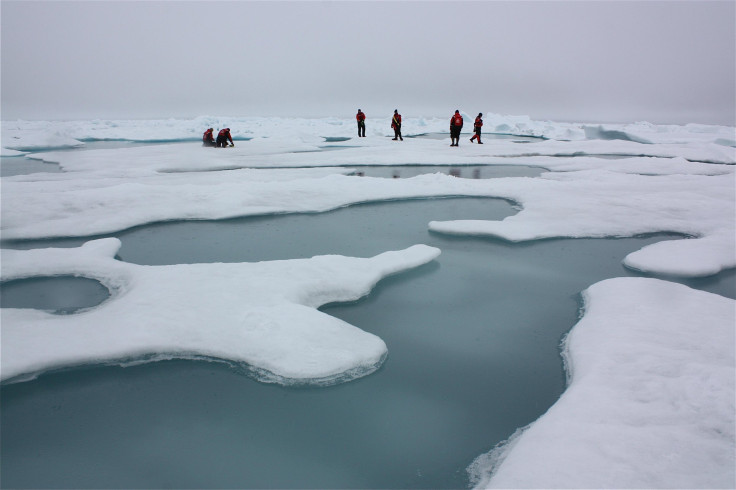Why Is Arctic Ice Turning Green? Phytoplankton Bloom Explained By New Model

Phytoplankton, the tiny organisms that form the bedrock of the marine food web, require photosynthesis to bloom. But the sun doesn’t shine under the ice sheets in the Arctic, so how did a massive bloom occur there in 2011?
New research by scientists from the Harvard John A. Paulson School of Engineering and Applied Sciences (SEAS), and the universities of Oxford and Reading in the United Kingdom, says the answer could lie in the thinning Arctic ice, which would reflect little sunlight, allowing a lot of it to penetrate below it, into the water where the phytoplankton would grow.
Over the past decade, Arctic ice has become thinner due to warming surface and water temperatures, which lets more sunlight to reach the water beneath. Large, dark pools of water — called melt ponds, have also increased in number, further reducing the reflectivity of the ice. The ice that is still frozen continues to get thinner.
Read: Some Arctic Ice Melt May Be Normal
Chris Horvat, first author of the paper and graduate student in applied mathematics at SEAS, said in a statement Wednesday: “Our big question was, how much sunlight gets transmitted through the sea ice, both as a function of thickness, which has been decreasing, and the melt pond percentage, which has been increasing. What we found was that we went from a state where there wasn’t any potential for plankton blooms to massive regions of the Arctic being susceptible to these types of growth.”

While the melt ponds were found to be a definite contributing factor, the biggest culprit was seen to be the thinning ice. Compared to 30 years ago, when only about 3-4 percent of the Arctic sea ice was thin enough to allow for phytoplankton to grow, that number is now up almost 10 times, to 30 percent.
“The meter decline in sea ice thickness in the Arctic in the past 30 years has dramatically changed the ecology in that area. All of a sudden, our entire idea about how this ecosystem works is different. The foundation of the Arctic food web is now growing at a different time and in places that are less accessible to animals that need oxygen,” Horvat added.
The phytoplankton bloom, they attract fish, which in turn attract large predators and provide food for communities in the Arctic. The increasingly frequent and extensive phytoplankton blooms could potentially disrupt the Arctic food chain, and “the researchers hope their model will be helpful for planning future expeditions to observe these blooms and measuring the impact this shift will have on ecosystems.”
Titled “The frequency and extent of sub-ice phytoplankton blooms in the Arctic Ocean,” the open-access study appeared in the journal Science Advances.
© Copyright IBTimes 2025. All rights reserved.





















